Lichtenstein Art Project With Contrasting Colors for 1st Grade
Thou – 6 Art
Fine art lessons for kids ages 5-12 – fresh from the fine art room!

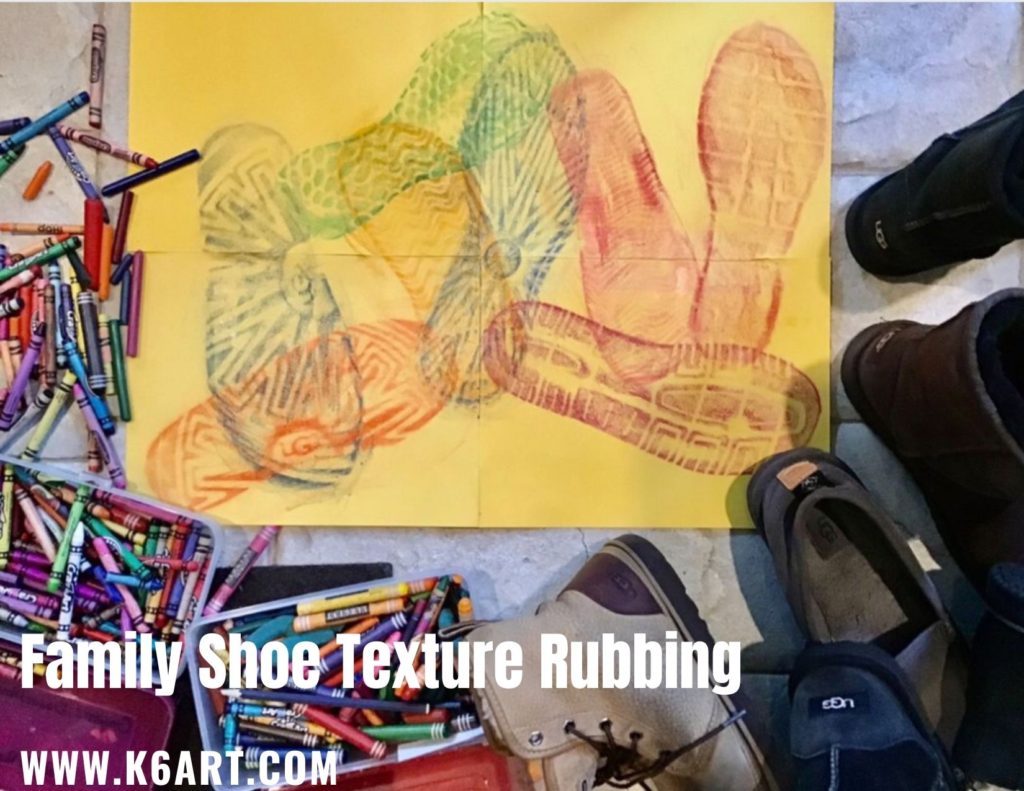
Here is an art project that teaches students near texture, is lots of fun and is perfect for both distance learning and the classroom.
Enjoy!
-Rina
Our first graders simply completed an Andy Warhol-inspired project in their full general ed classroom. After reading Getting to Know Andy Warhol, they drew a single common object. In past years, their instructor would have the drawings to the copy auto, reduce them and make four images of each child's fine art. The children would then color the copies. This year I consulted with the first grade teacher about how to utilise iPads to simplify the process. We ended up with two options using the iPad camera and two free apps: PicCollage and Pop Fine art Lite.
Pop Art Lite does but one thing: turn artwork into 4-part Warhol grids. I like Popular Fine art lite considering you can change the color scheme. Warm, cool, complementary, analogous are choices you can make.
For PicCollage, kids take a photo of their cartoon with the iPad, then put that photo in each quadrant of a filigree. You can conform the filter color, or print out the PicCollage and then hand colour information technology. 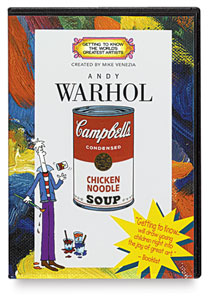
We used this Warhol soup tin can template from the E is for Explore weblog during our art prove. I read that Warhol used a 'semi-mechanized' method for creating his soup cans – I figure a re-create machine is besides semi mechanized. Here are the results.
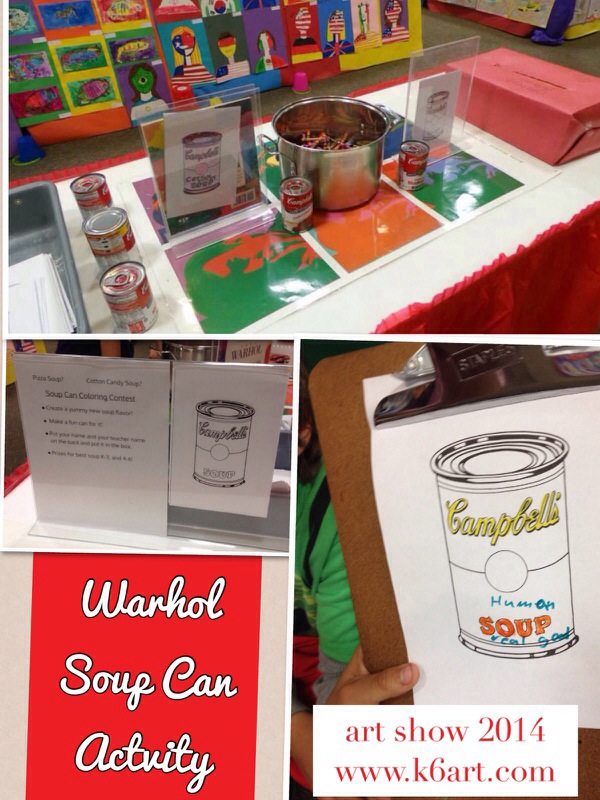
Our interactive coloring contest ties in to the FEAST! unit.
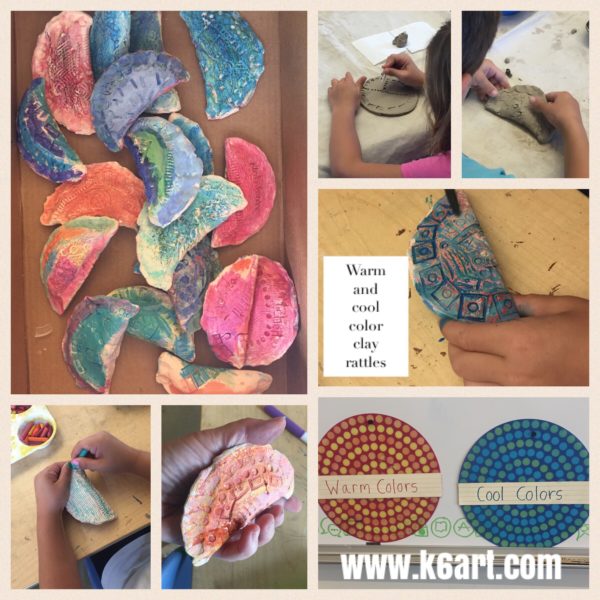
If you are looking for a super-successful clay lesson for Kindergarteners-2nd course, you lot've come up to the right place. These functional clay rattles simply requires a single bisque firing, and are finished with a fast and easy warm and cool color process. Students, parents and teachers loved them. I've included an instructional video at the end of this post – all my kindergarten students watched it and created the rattles independently.
Materials:
To create the rattles:
- Clay
- Rolling pin and slats (or slab roller)
- Circle template or bowl to trace
- Pin tool
- Texture tools (we used LEGO)
- Toilet Paper
- Toothbrushes and h2o bowls
Prep:
Roll the slab and cut the circles. Embrace the tables. Each tabular array should have a tray of LEGO, ane toothbrush for every two students, and small-scale water dish. They also demand a couple of squares of toilet paper and a little chip dirt.

Procedure is in my instructional video. This was a very effective video: 100% of KINDERGARTENERS did this project correctly and independently the start time. I strongly recommend showing this.
Coloring the rattles:
Materials:
- crayons/construction paper crayons, sorted into warm and absurd colors
- individual pans of h2o color
- brushes and h2o cups
Process:
Students scribble on the textured ceramic with their crayons. Ideally, 1 side could be cool color crayons and the other warm. Then they paint over the crayons with (ideally), the contrary colour scheme. This was kindergarten….some did it, some didn't, but they all looked great.
This was a great terminate of twelvemonth project: all my water colors had merely about run out. Yet we had enough for this projection. I sure await tired in this video, though. Typical for cease of year…
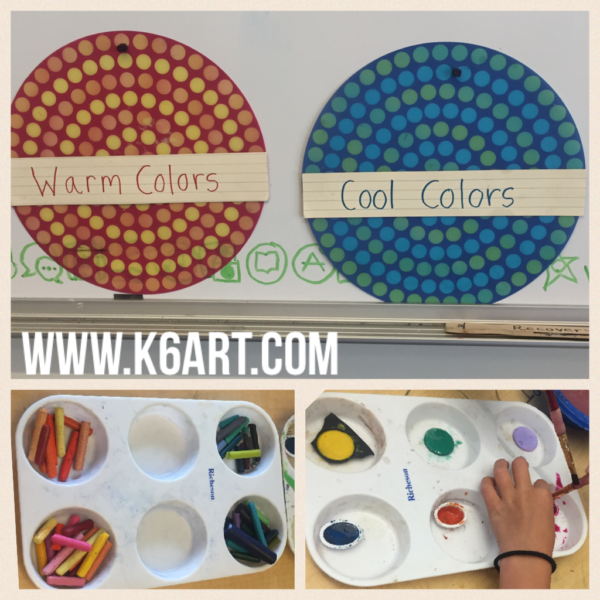
Enjoy!

Exercise you have a sure-fire clay project for kindergarten?
Have you tried creating instructional videos?
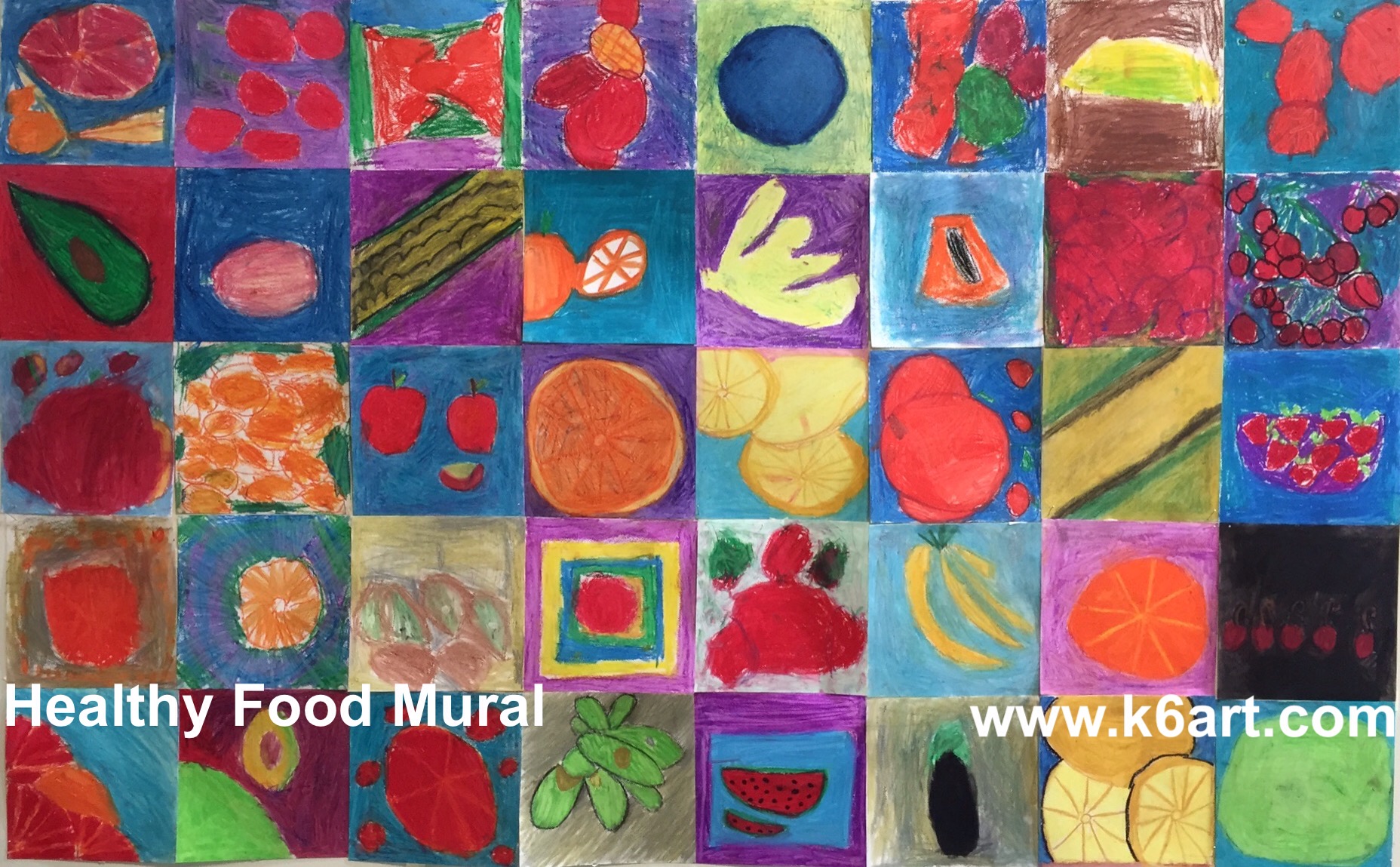
Our second graders are studying healthy foods. We created this mural equally part of the project. Information technology was likewise an extension of our warm and cool color lesson.
Materials:
watercolor newspaper, 7″x7″
oil pastels
baby oil
q-tips
reference photos of fruits and vegetables (we used the weekly grocery store ads from the newspaper)
Directions
Draw one blazon of fruit or vegetable on the paper using oil pastel. Fill the square. Utilise and warm and cool color scheme – if you describe a warm color fruit, use a cool color background, and vice versa.
After cartoon, alloy the oil pastels with a q-tip dipped in a Bit of babe oil. Be sure to employ two q-tips – one for blending warms, and 1 for blending cools.
Identify completed artworks on a drying rack for a day or two and then excess oil can absorb into the paper.
Mounting:
I laid out the artwork confront downward in a grid, and taped all the seams together with masking tape. If y'all use plenty tape on the dorsum y'all tin hang it as a single slice.
If y'all ever decide to take down your masterpiece, y'all accept the choice of cutting on the seams and returning individual artworks to students.
Enjoy!

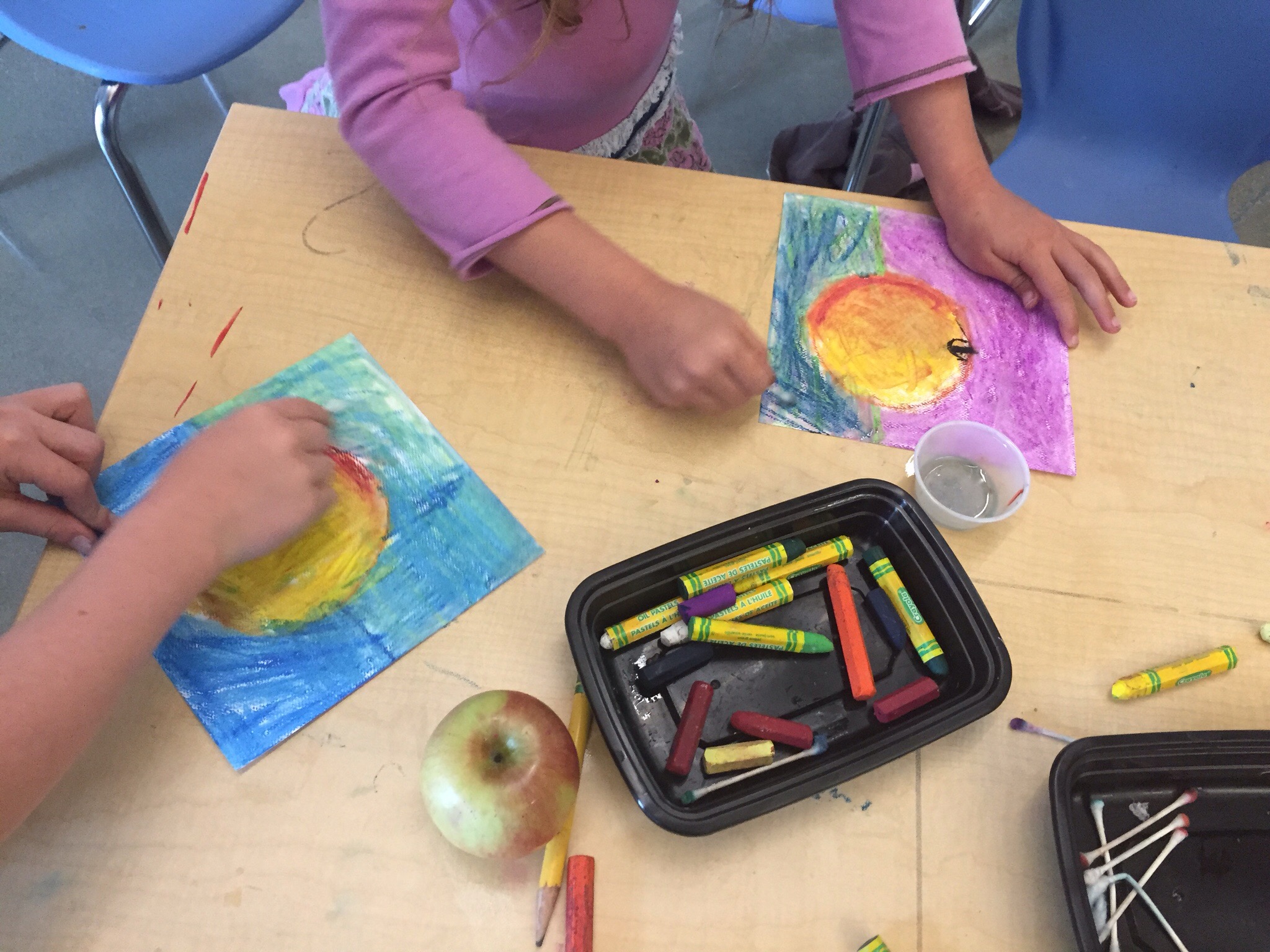
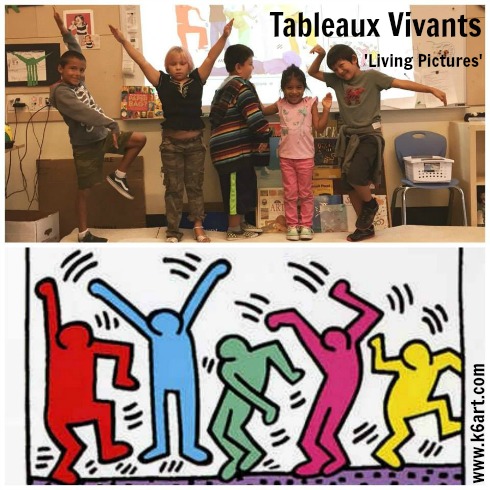
Get-go grade tableau vivant: Keith Haring, "V Figures Dancing".
Our first and 2nd graders acted out a series of tableaux vivants ('living pictures' ) concluding calendar week.In traditional tableaux, people dress up every bit the characters in an artwork. They hold a minutes-long pose in forepart of an elaborately painted background. We skipped the costumes and backdrops, only all the same had a great fourth dimension interacting with the artworks.
We began with a Powerpoint and video (see beneath). For a warm upwardly, we proficient posing like theMona Lisa. Afterwards students understood the basic concept, they acted out artworks with progressively larger groups of characters.
Subsequently a few group activities, I put a agglomeration of art books on the tables and let students act out whatever they liked.
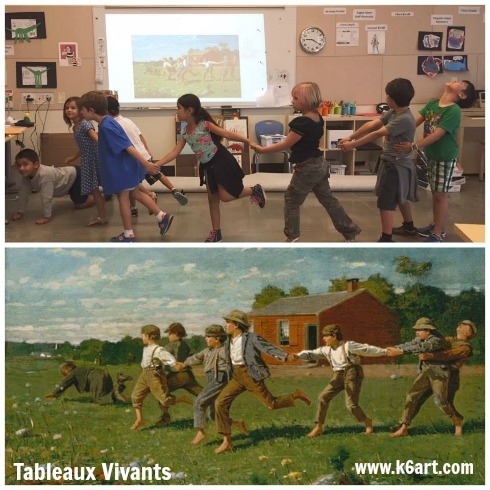
Kickoff form tableau vivant: Winslow Homer 'Snap the Whip'.
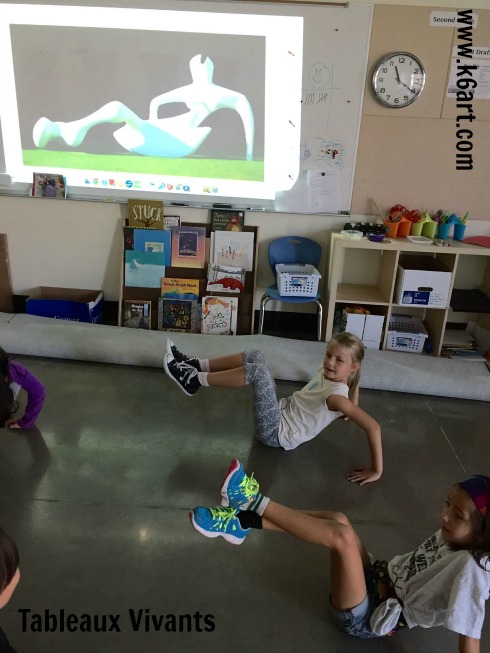
2nd grade tableau vivant: Henry Moore, "Reclining Figure".
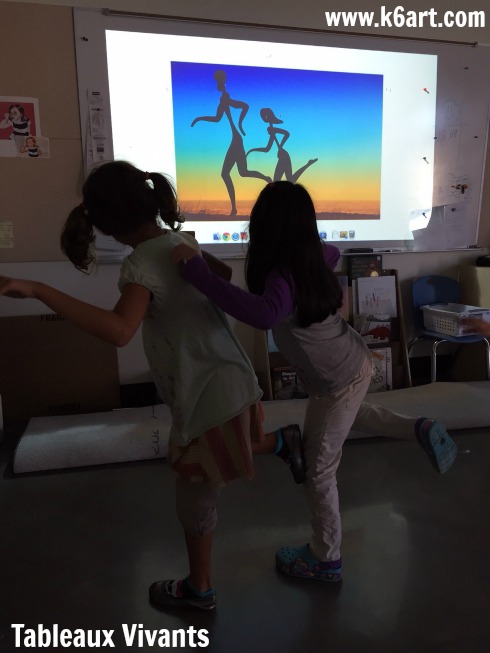
2nd grade tableau vivant.
I love the 2d course interpretation of Roy Lichtenstein's Wham!. The little girl in the photograph is interim out the explosion.
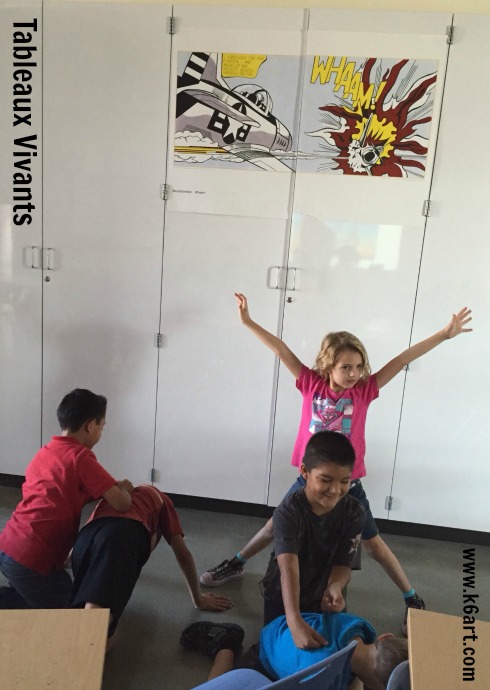
Second grade tableau vivant: Roy Lichtenstein, 'Wham!'
Resources:
'Pagent of the Masters' is an elaborate tableaux vivants production staged each summer here in Southern California. It has been going on since 1933, and features tableaux based on painting, sculpture, prints and more. Check out this video from CBS Dominicus Morn .
Here is the Google Presentation (it'due south just like a Powerpoint) I created for our lesson. Information technology includes some fun 'sculpture game' activities at the finish.
Tableaux vivants are a great way to collaborate with artworks at the museum. Check out this article from Fine art Museum Didactics.
Next steps:
Can you lot imagine the students staging their ain Pagent of the Masters? They could select their own artworks, dress up, paint their own groundwork, gather props, have a student director, an iPad photographer….how absurd would that be? Maybe next term….
Enjoy!

Source: https://www.k6art.com/category/lesson-plans/1st-grade/
0 Response to "Lichtenstein Art Project With Contrasting Colors for 1st Grade"
Post a Comment